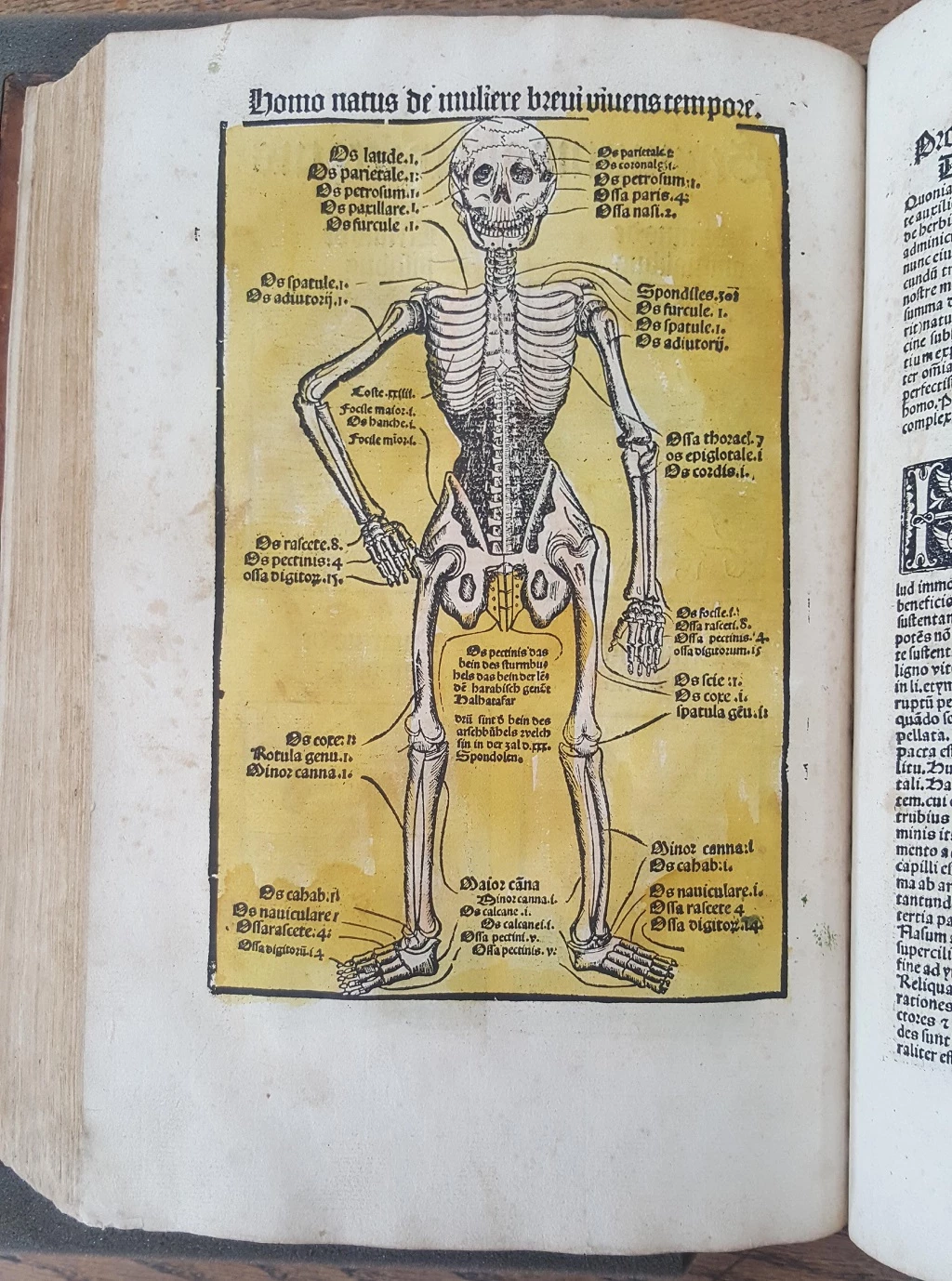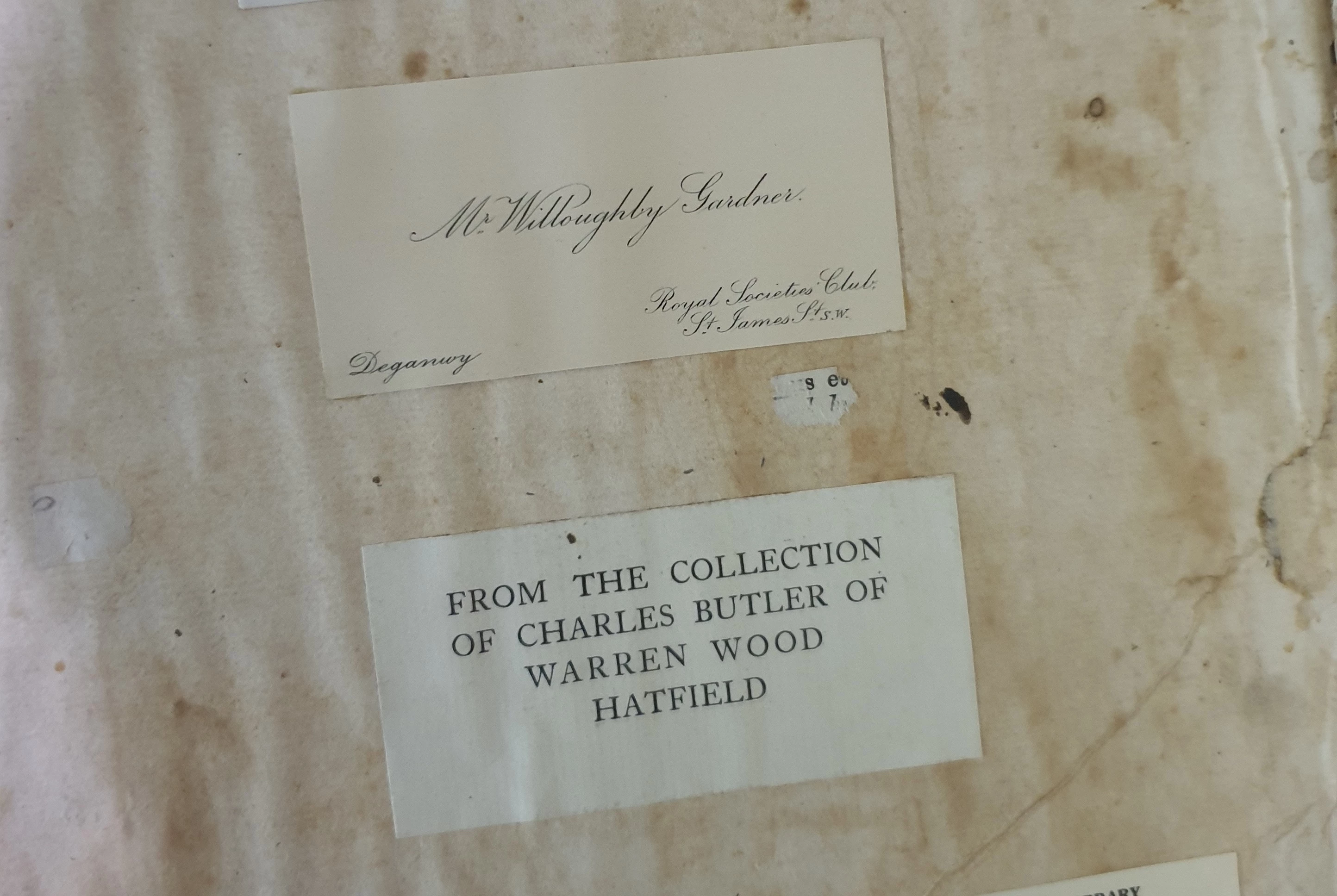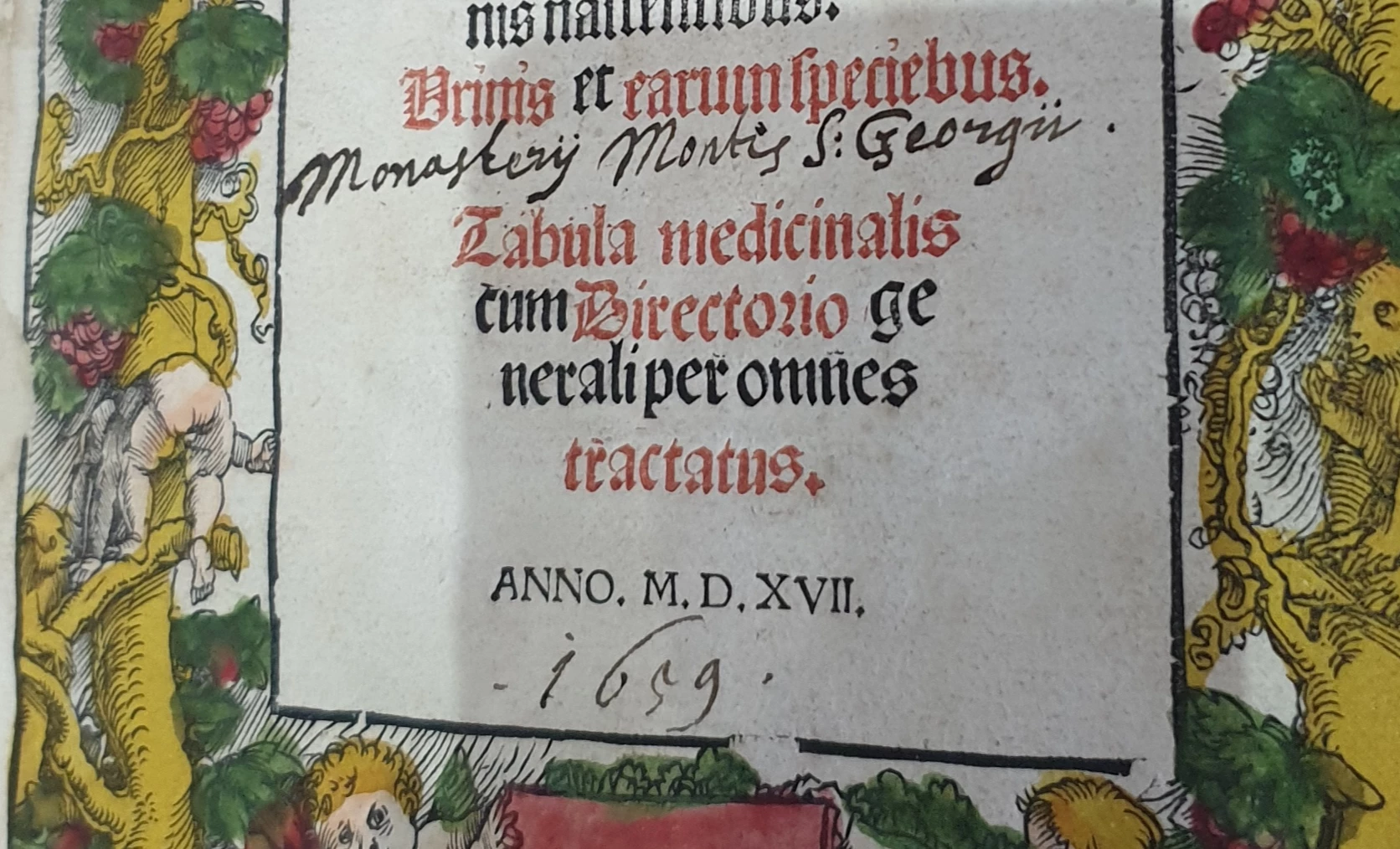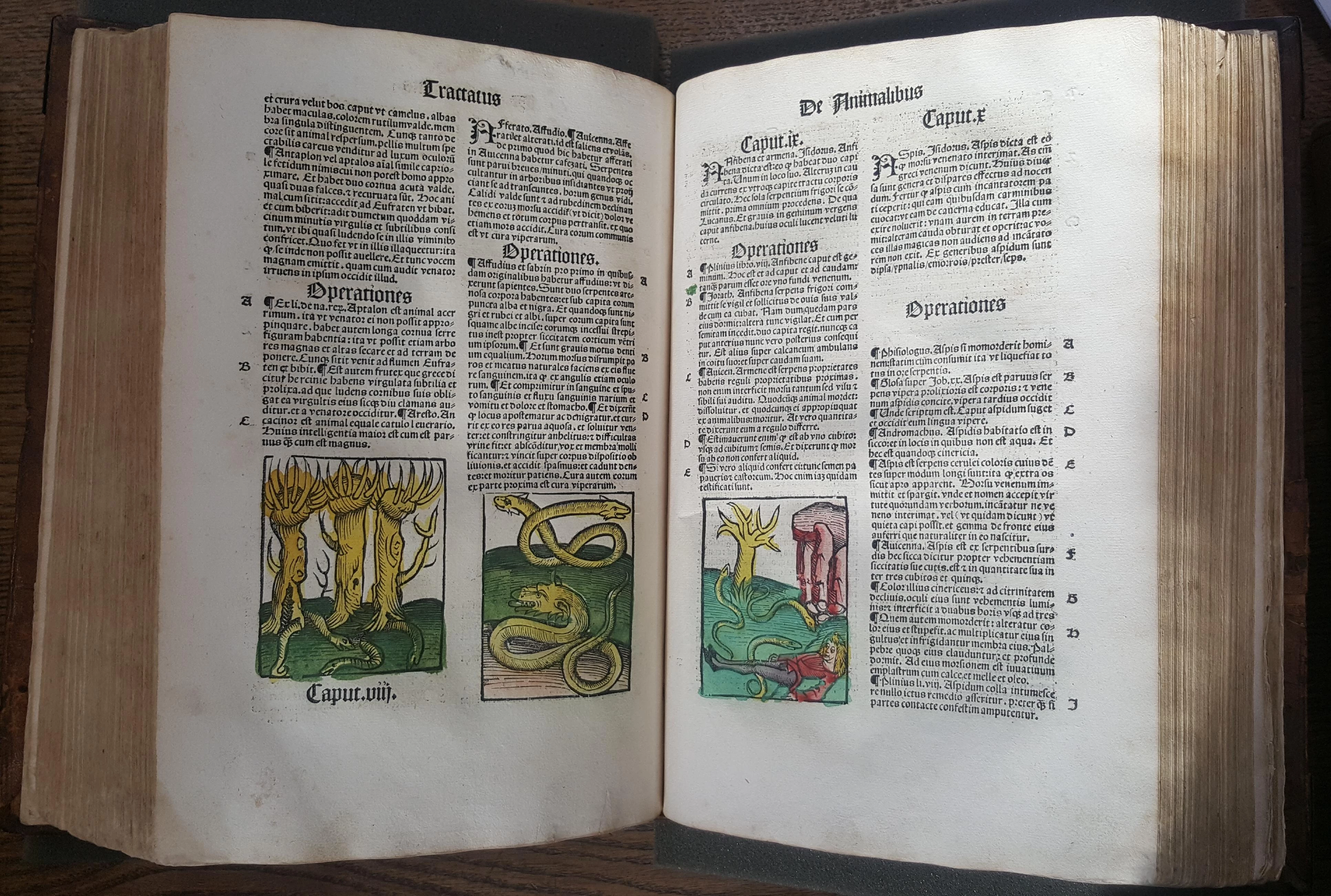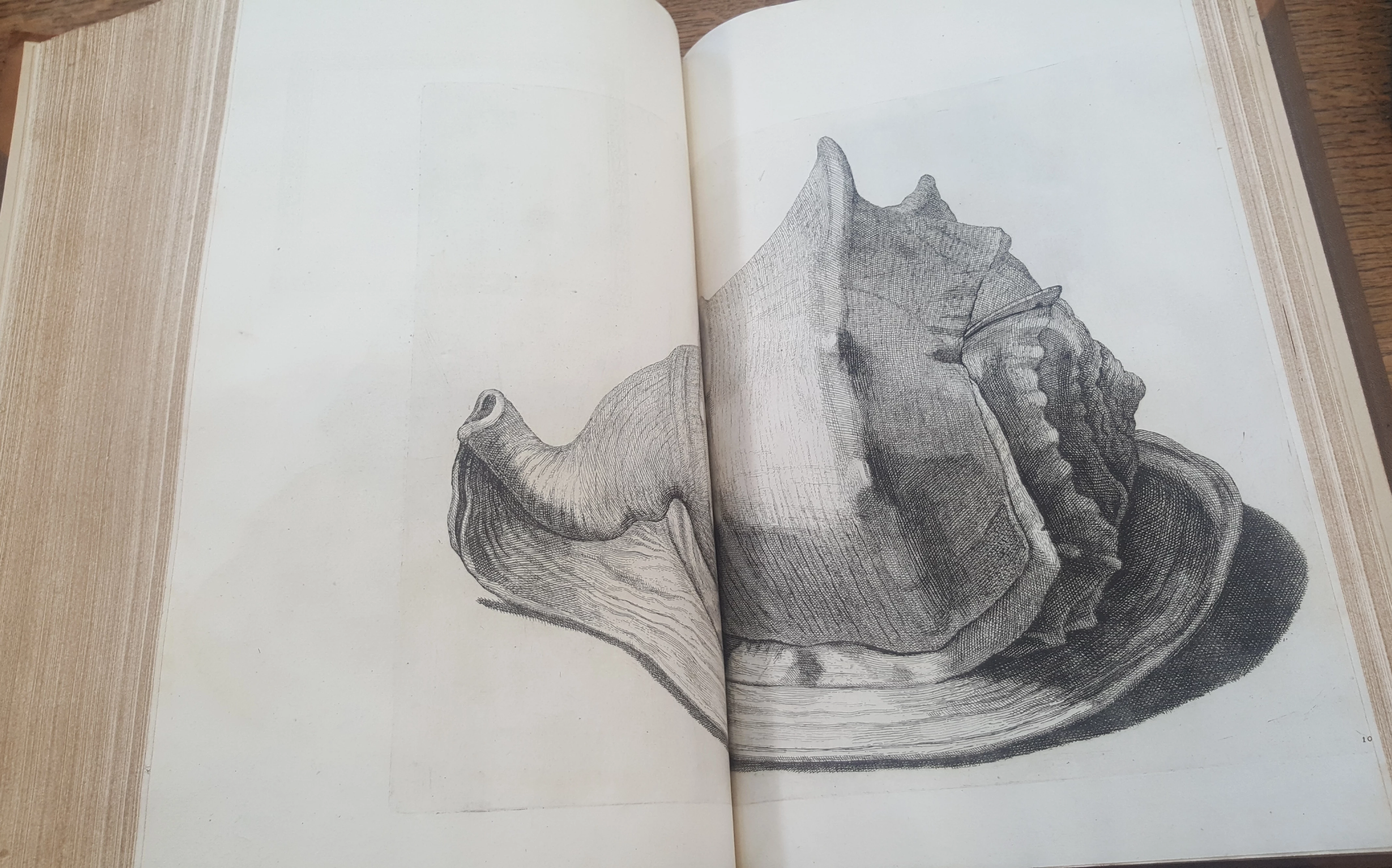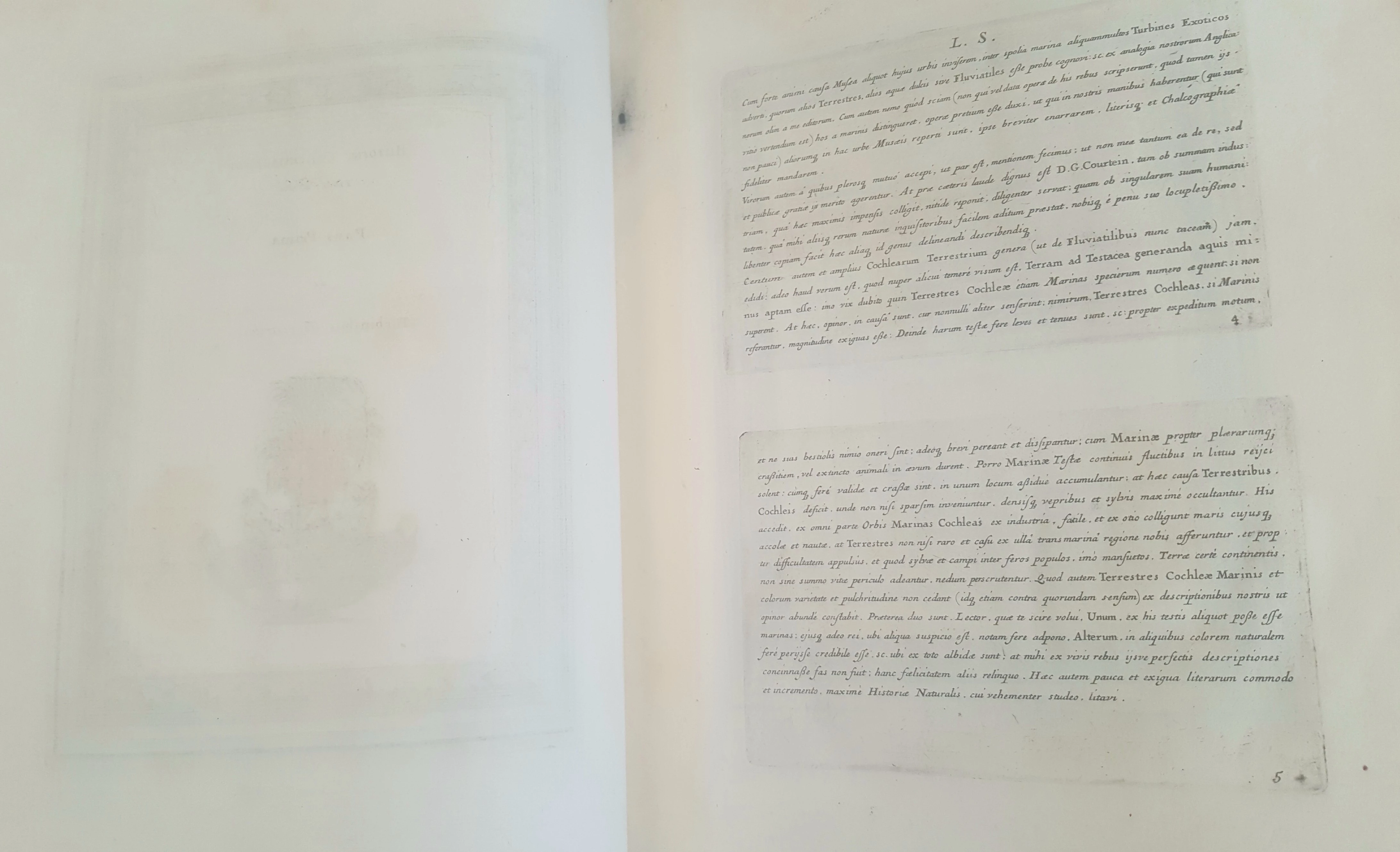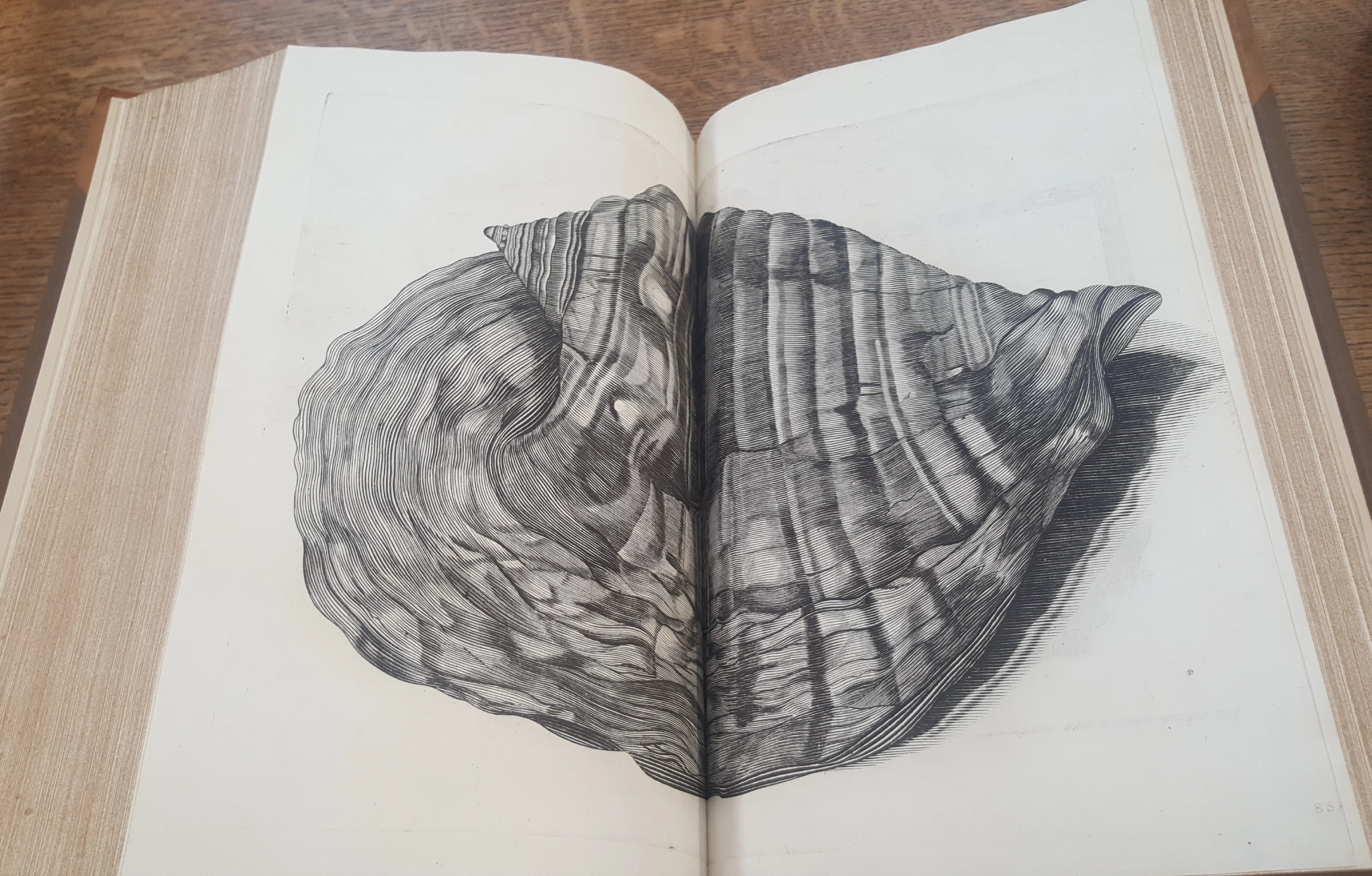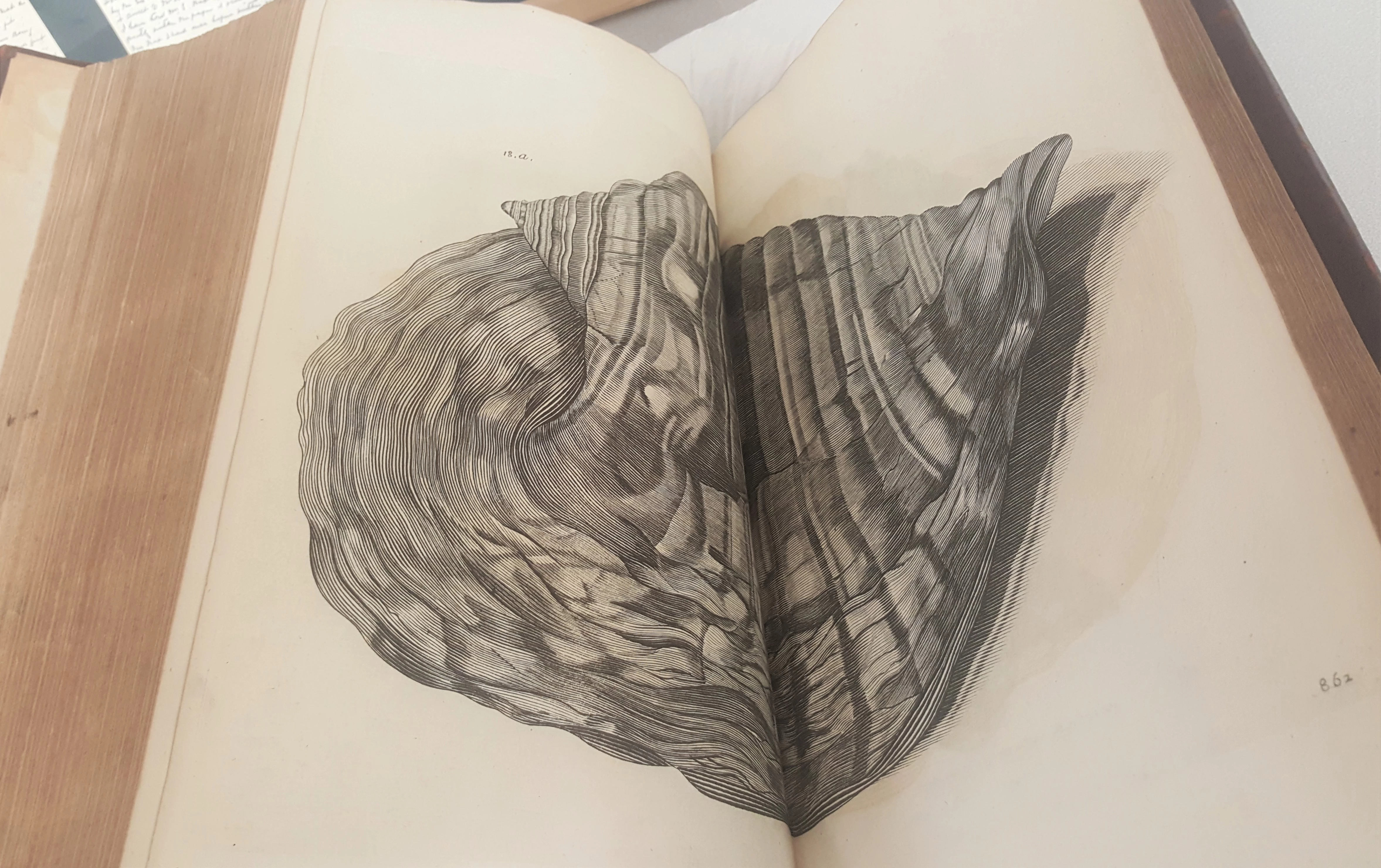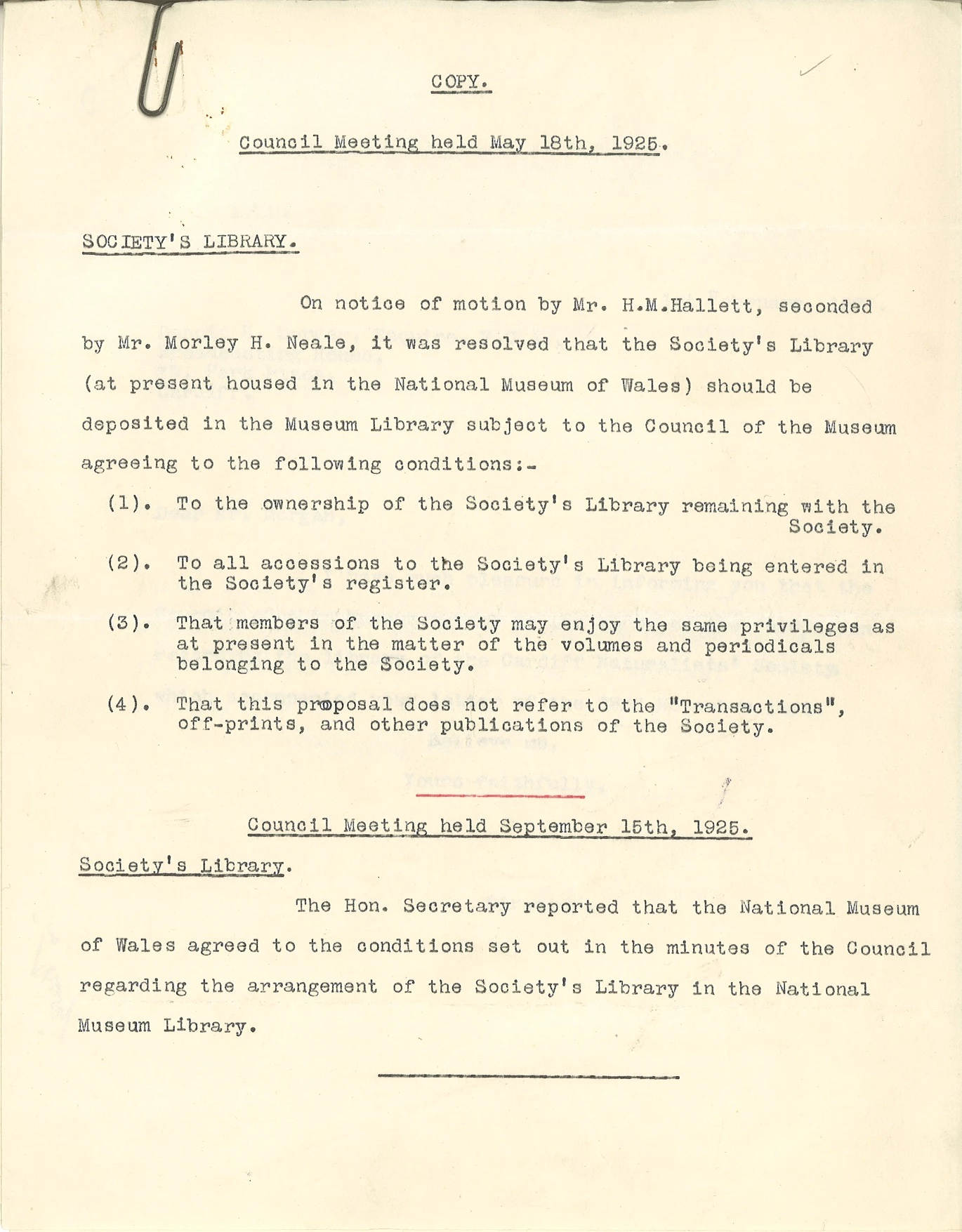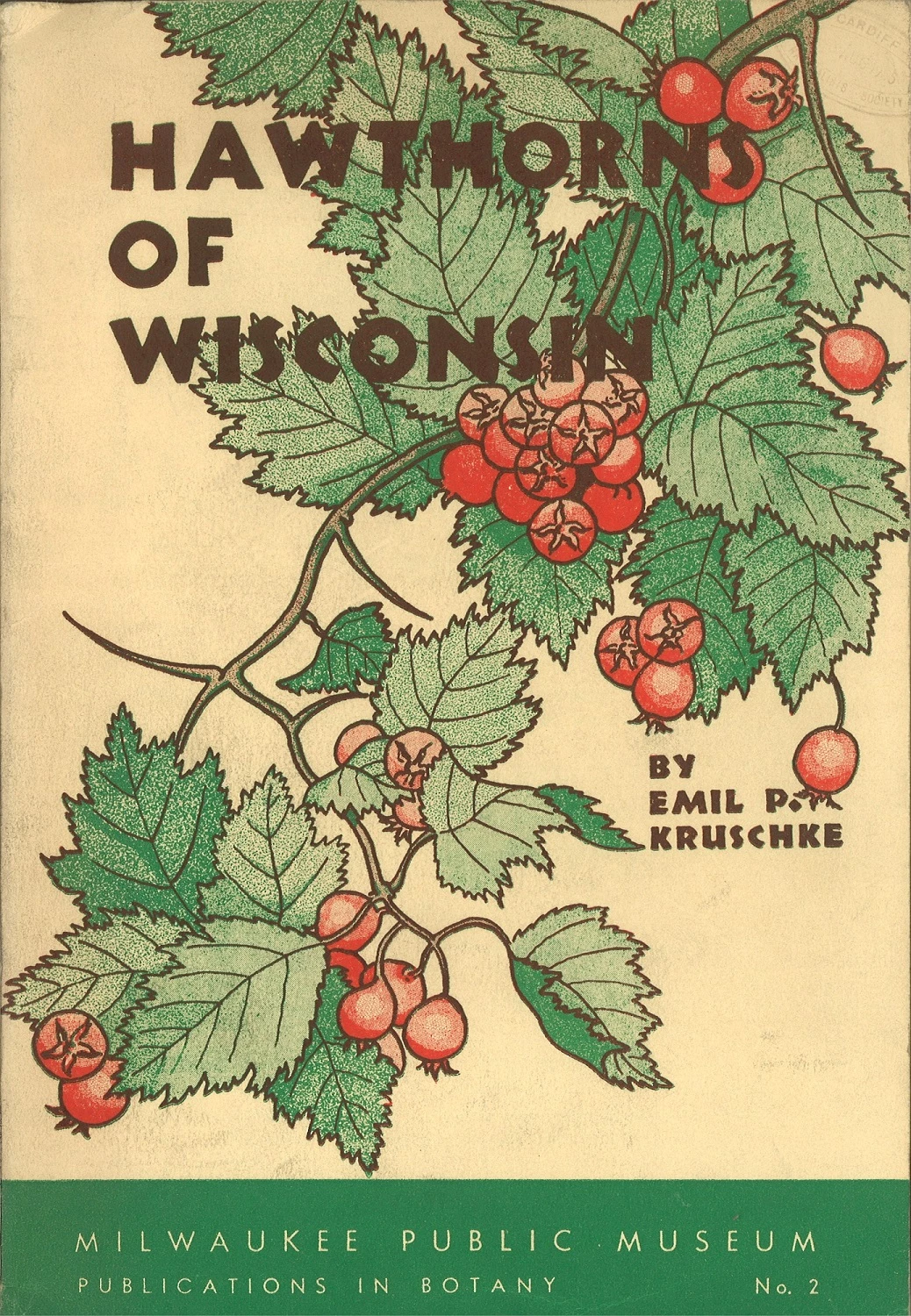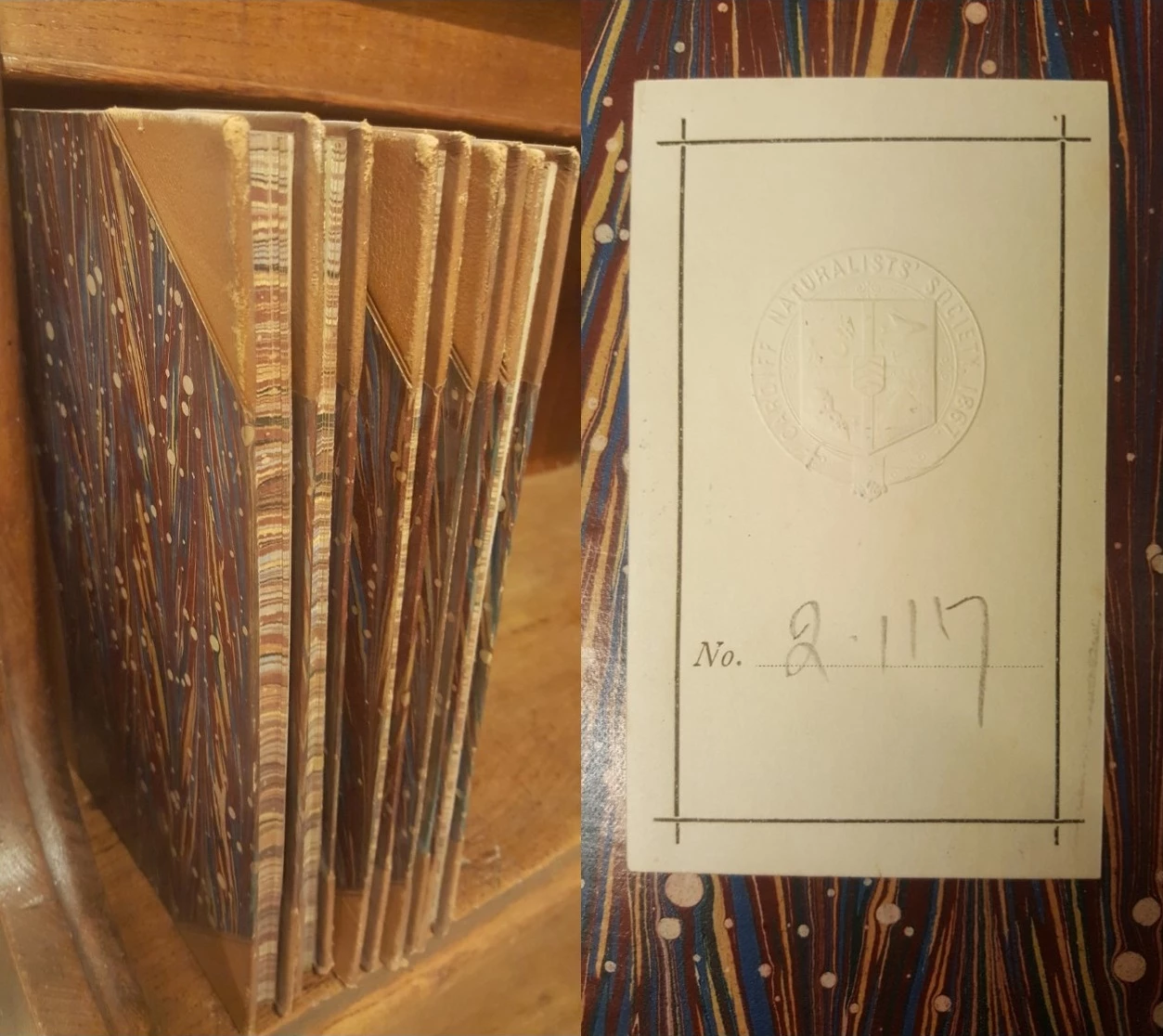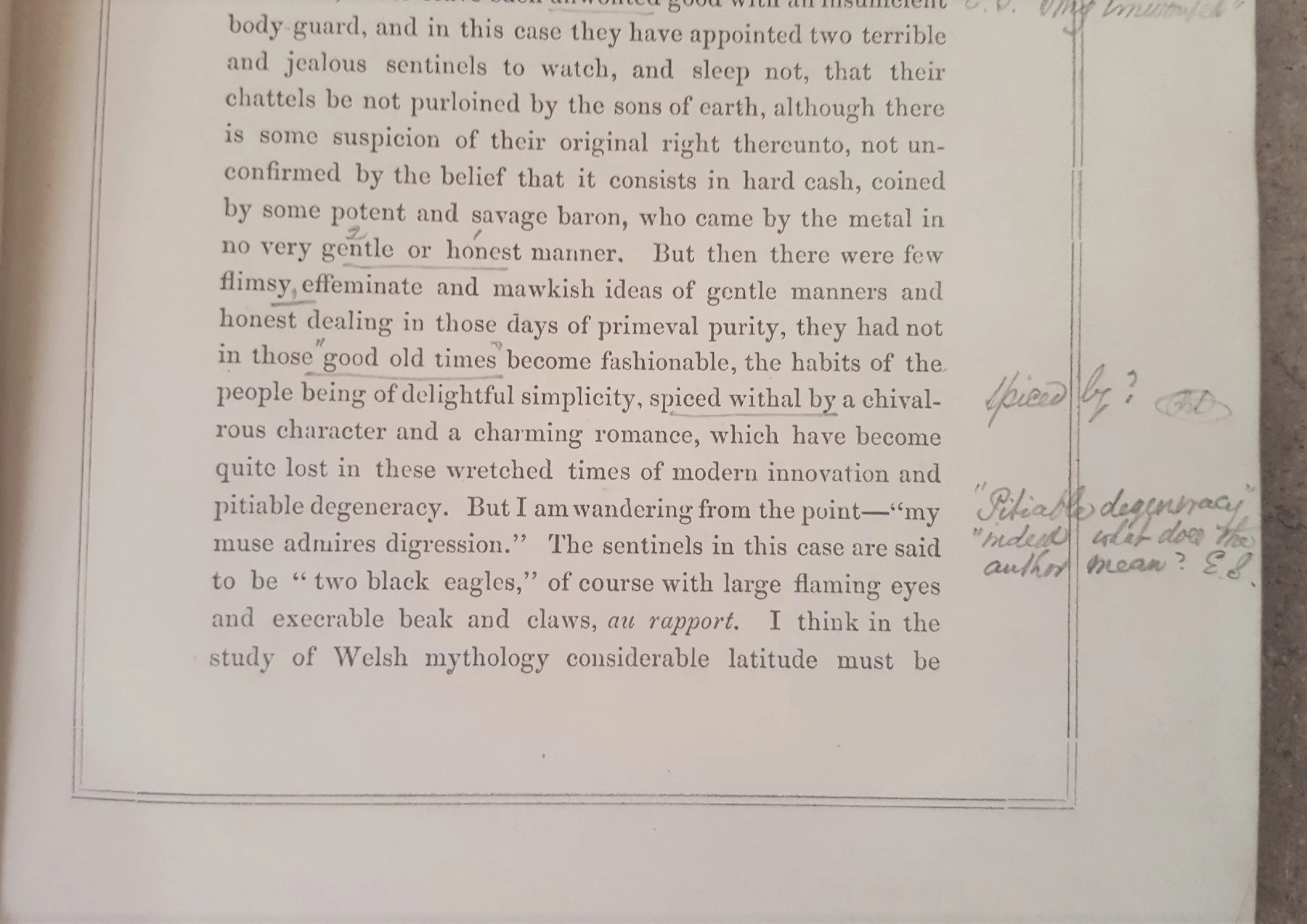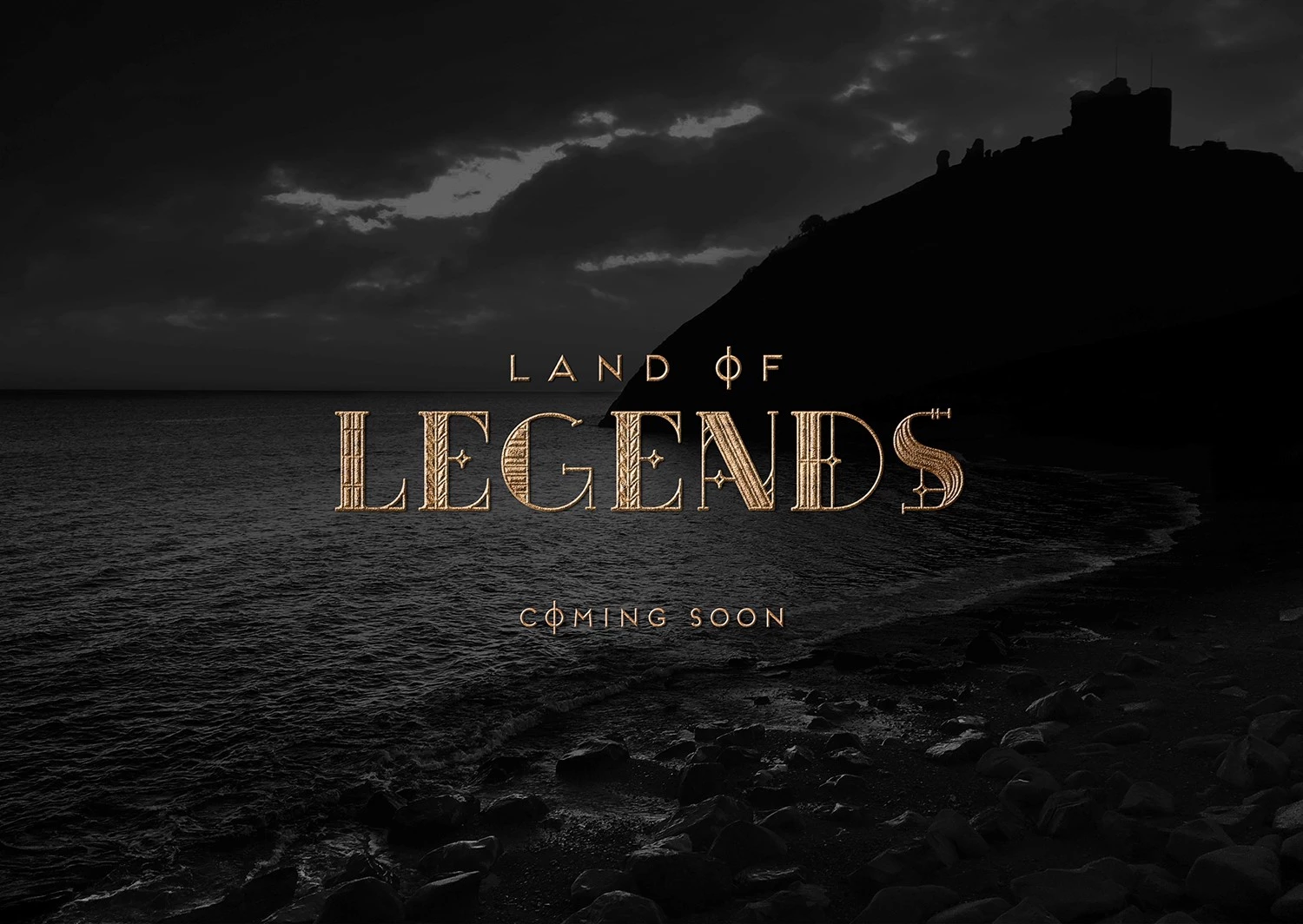Hortus Sanitatis: an early herbal
, 22 Awst 2019
If you visit the Snakes exhibition at National Museum Cardiff (open till 15 September), you will see a 16th century book from the Library collections.
This unusual book is known as Hortus Sanitatis (although it is also written as Ortus Sanitatis) which roughly translates to ‘The Garden of Health’ in Latin. It is an early example of a herbal, a book containing descriptions of plants, along with how to prepare and use them as medicinal remedies.
It started life in 1485 as a German ‘Herbarius’, also called the Gart der Gesundheit, before an extended version, translated into Latin, was published in 1491. Unlike the German version, the new Latin version didn't just focus on plants, but also included remedies involving animals, birds, fish and minerals.
Over the next 50 years the book was published in many more editions and languages. As well as new Latin and German editions, it was also translated into Dutch and English (although often in shortened versions). The English edition is called the Noble lyfe & natures of man, of bestes, serpentys, fowles & fisshes, and was produced around 1527. All these editions indicate just how popular this book was in the 15th and 16th centuries. Perhaps it saw so many reprints because unlike most herbals of the period, it covered more than just plants. But by the 1530s it was being replaced by the herbals of the 'German Fathers of Botany', Bock, Brunfels, and Fuchs.
Our copy of Hortus Sanitatis is one of the Latin editions published in Strasburg in 1517 by Reinhard Beck. The full title is Ortus sanitatis de herbis et plantis. De animalibus et reptilibus. De avibus et volatilibus. De piscibus et natatilibus. De lapidibus et in terre venis nascentibus. Urinis et earum speciebus.
It has no known author, as was common with herbals of this period, and is heavily illustrated. The illustrations, along with the purchase of the paper for printing, would have been the most expensive part of producing the book, and so were re-used from other works. Unusually for the period, many of the woodcuts are coloured.
Our copy of this book is from the Willoughby Gardner Library, but also has a bookplate identifying it as part of the former collection of Charles Butler. Charles Butler, Esq. [1821-1910] was an English politician and collector. He held a very extensive and valuable library at Warren Wood, Hatfield, which was sold off at Sotheby’s in 1911.
It’s most likely that Willoughby Gardner purchased the book from that sale, either directly or indirectly from a rare books seller. He regularly purchased books from famous libraries, and so would have been well aware of such a significant auction.
The title page of the book also gives us a clue to a much earlier owner. Written in ink are the words ‘Monasterii Montis S. Georgii 1659’, indicating that it might have formerly been in the possession of a monastery in Austria.
The monastery of St. Georgenberg was founded on the site of a hermitage, near Stans, and held an extensive library. In the 17th century the abbot decided to reorganise it and give the books new marks of ownership, written on the first and last folios, and usually dated (most often in 1652, 1659, and 1661).
In 1850 the monastery sold a number of books from their library in order to raise money, and many of them have since ended up in public collections in the UK. It is quite likely that Charles Butler acquired Hortus Sanitatis from that sale.
Further reading;
Anderson, Frank J. An illustrated history of the herbals. New York, Columbia University Press, 1977
Arber, Agnes. Herbals: their origin and evolution, 3rd edition. Cambridge, Cambridge University Press, 1986

